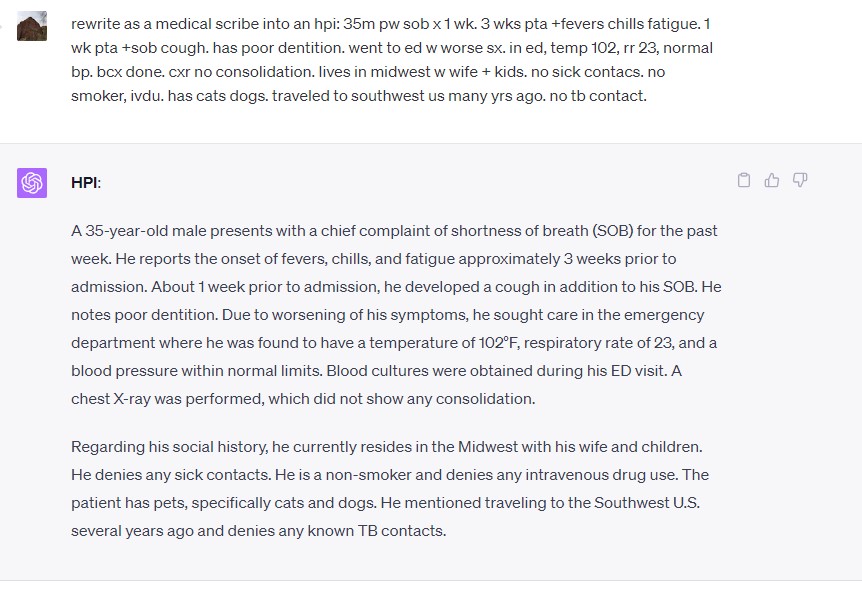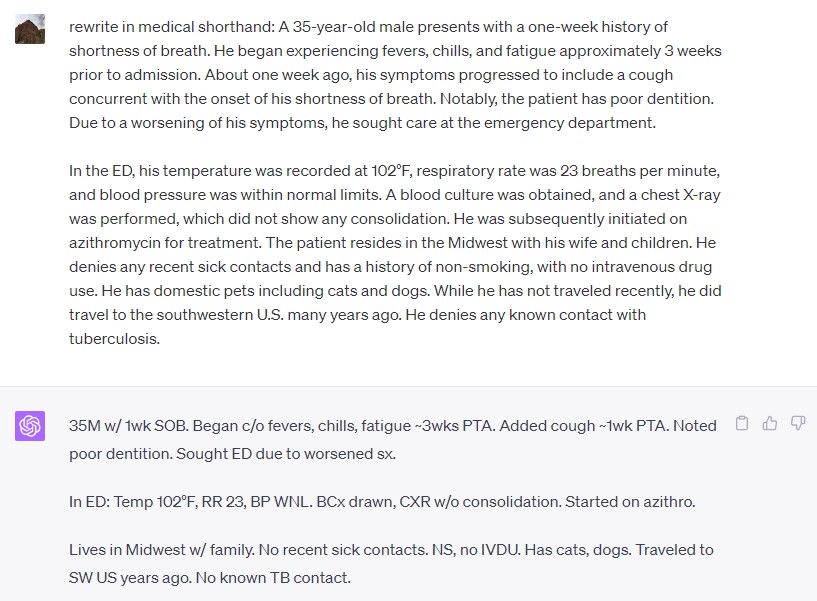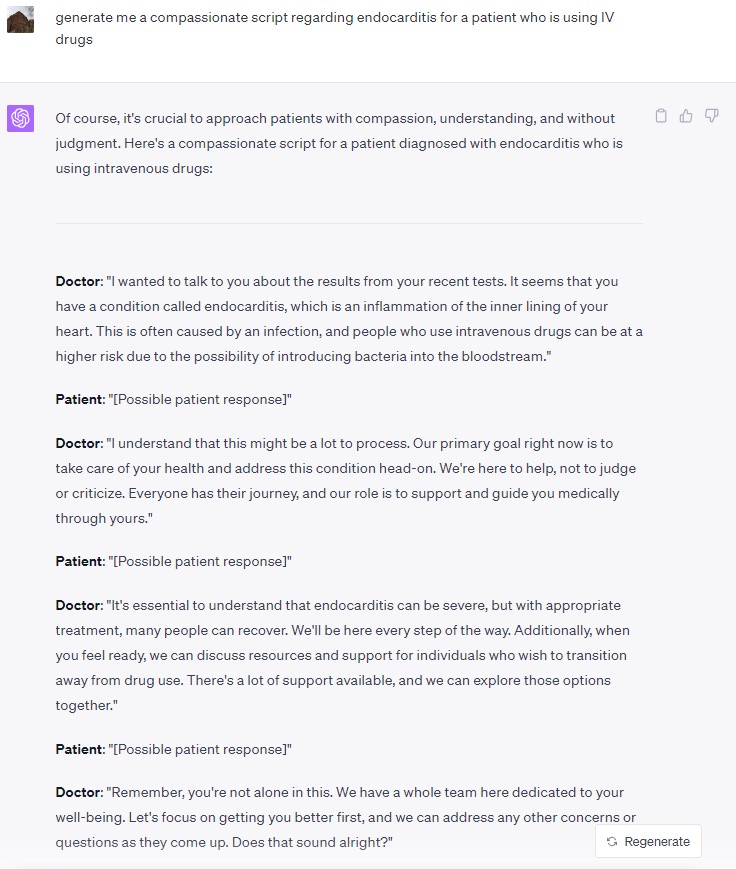 The arrival of the generative artificial intelligence chatbot known as Chat Generative Pre-Training Transformer, or ChatGPT, in November 2022, felt like it was the beginning of the future. With its ability to generate text, images and other types of content with a few prompts, ChatGPT quite literally changed the landscape overnight. Suddenly, people now had access to a technology whose potential for content creation was boundless.
The arrival of the generative artificial intelligence chatbot known as Chat Generative Pre-Training Transformer, or ChatGPT, in November 2022, felt like it was the beginning of the future. With its ability to generate text, images and other types of content with a few prompts, ChatGPT quite literally changed the landscape overnight. Suddenly, people now had access to a technology whose potential for content creation was boundless.
One of the biggest draws of using generative AI is its promise of saving its users time by performing routine tasks extraordinarily. According to a recent survey, more than one-third of infectious diseases physicians experience burnout, and spending time on endless, mundane tasks plays a significant role. (1) So how can generative AI, specifically chatGPT in its current iteration, ChatGPT-4, (2) help the everyday ID physician?
I have tinkered with the latest version of this chatbot to determine some common tasks of ID clinicians that could be improved with generative AI so that less of our time is spent on routine work and more on exciting things, such as spending more time communicating with patients and colleagues, starting new projects, and reading books and journals we promised ourselves we would read if we had more time.
1. Improve your clinical notes and save time writing them.
One of the most repetitive and time-consuming tasks we physicians face is the completion of medical notes. Indeed, documentation has frequently been cited as a primary driver of physician burnout. (3) This is especially true for ID physicians, who are often tasked with crafting extensive reports. While dictation serves as a helpful tool, it’s not always accessible, and it can produce text that, although correctly spelled, may not accurately reflect the intended context.
Here's where ChatGPT comes into the picture. You can ask it to transform medical shorthand writing, even with deliberately incomplete sentences and misspellings, into a comprehensive, well-articulated and full-bodied clinical note. The key is in choosing the right prompts. For my example, using a hypothetical patient, I used “rewrite as a medical scribe”:
It can also do the reverse. For instance, if you need to relay a sign-out to a colleague who values brevity and simplicity, you can enlist ChatGPT’s assistance by using the prompt “rewrite in medical shorthand”:
There are also technologies on the horizon that aim to integrate generative AI into dictation, which is likely the direction medical note writing is heading toward.
2. Need help generating differential diagnoses for a case? No problem.
In light of a recent study that demonstrated that ChatGPT not only succeeded in passing U.S. medical licensing exams but also outperformed medical students (4), the idea of utilizing AI as a supplement to our medical knowledge base holds significant promise. While AI may not be primed to supplant human physicians currently, it can play a role in information management, presenting us with contextual and comprehensive data at the click of a button. After all, the knowledge bank that ChatGPT draws from for content generation is the same vast swaths of internet-based information available to us.
This AI chatbot is not intended to replace our gestalt in dealing with cases but rather to serve as an expedient reference and potentially even more. While listening to an ID grand rounds case, I asked the chatbot to generate differential diagnoses (no identifiable information is included here):
This patient was found to have malaria.
3. Generate easy-to-understand content for your patients.
One of the initial applications of ChatGPT amongst physicians was to enhance bedside manners. It accomplished this by generating physician scripts or talking points that were empathetic and easily comprehensible for patients. This can be used in dealing with complex ID cases. I asked chatGPT to generate a compassionate script regarding endocarditis and drug use:
4. Summarize papers for you.
Given our substantial workload, it can sometimes seem unfeasible to peruse all the papers we’re interested in by day’s end. The newest iteration of the chatbot, ChatGPT-4, can do the reading for you. With its enhanced capability to incorporate “plug-ins” with features that you need, you can enhance further the capabilities of the chatbot. There are plug-ins for video creation, code reading, Wikipedia, etc. There are those that can succinctly summarize entire medical articles. Moreover, you can engage the chatbot in a Q&A about the article, including soliciting its critique of the paper.
Here, I used the “Ask Your PDF” plug-in in chatGPT-4 to “read” an article (5) on infectious diseases:
Conclusion
Despite its advanced capabilities, ChatGPT does have some limitations. The accuracy of its responses largely hinges on the nature of the prompts it receives, which can lead to contextually erroneous content if inappropriate prompts are used. Moreover, because it saves all data unless you delete it, there is a potential risk for breaches of patient confidentiality. To mitigate this risk, it is imperative to exclude identifiable patient information from data entry, and, if necessary, institutions should establish clear protocols on how to correctly use this technology. Lastly, as previously mentioned, ChatGPT is not a substitute for professional judgment. It is essential to verify its output against trusted sources consistently.
While ChatGPT is the one that started this all, it’s not the only player. Google’s large language model-based chatbot, “Bard,” can do similar things and will likely get integrated into the ecosystem of Google mobile and web-based applications. It’s probably worth trying both to determine which one works best for your needs. Also worth checking out are ChatGPT’s other plug-ins that can enhance productivity and content generation.
The capabilities of generative AI are anticipated to evolve and expand significantly in the coming years, with integration into health care and physician practices becoming increasingly inevitable. Taking the initiative to familiarize yourself with its potential benefits, applications and limitations is an excellent initial step towards embracing this technological future today.
References
1. Koval ML. Medscape Infectious Disease Physician Lifestyle, Happiness & Burnout Report 2023: Contentment Amid Stress. Feb. 24, 2023.
2. ChatGPT-4. https://chat.openai.com/?model=gpt-4. 2023.
3. Yan Q, Jiang Z, Harbin Z, Tolbert PH, Davies MG. Exploring the relationship between electronic health records and provider burnout: A systematic review. J Am Med Inform Assoc. 2021;28(5):1009-21.
4. Strong E, DiGiammarino A, Weng Y, Kumar A, Hosamani P, Hom J, et al. Chatbot vs Medical Student Performance on Free-Response Clinical Reasoning Examinations. JAMA Intern Med. Published online July 17, 2023.
5. Maertens J, Cordonnier C, Jaksch P, Poire X, Uknis M, Wu J, et al. Maribavir for Preemptive Treatment of Cytomegalovirus Reactivation. N Engl J Med. 2019;381(12):1136-47.





